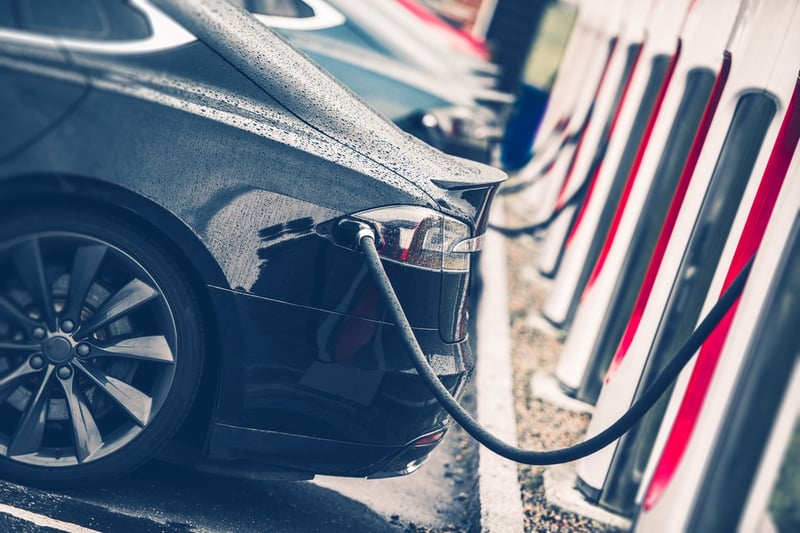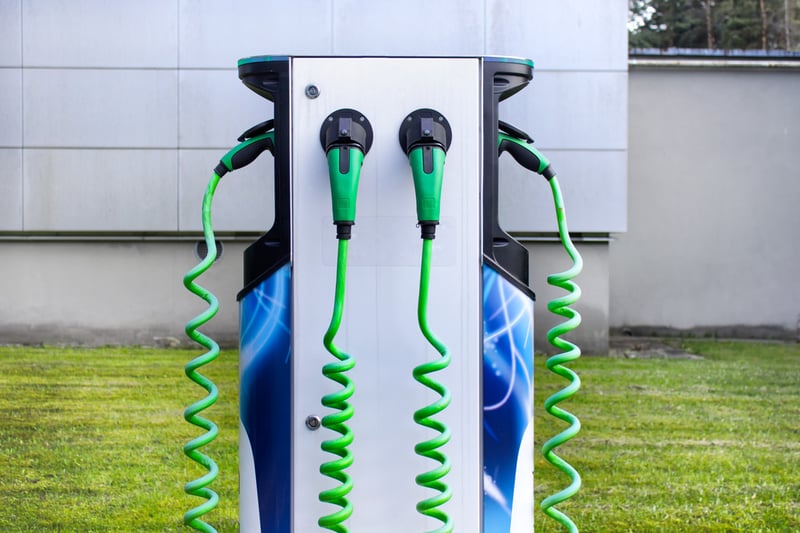The 4 Main EV Charging Station Design Challenges in 2024

Electric vehicles can help reduce emissions in the transportation sector, but they also bring a series of technical challenges. The US federal government wants to increase zero-emission vehicle sales to 50% of the market by 2030, but this can only be achieved if EV charging stations are installed fast enough to keep up with a growing fleet.
According to a study by McKinsey & Company, the US will need 1.2 million public EV chargers and 28 million private EV chargers to reach the target of 50% zero-emission vehicle sales by 2030. To keep up with a growing fleet, the number of EV charging stations in the US must increase by 20 in less than a decade.
The federal government is aware of this need, and the Bipartisan Infrastructure Law included $7.5 billion to help install 500,000 public EV chargers in key corridors. A single DC fast charger can cost between $40,000 and $100,000 according to Clean Technica, and McKinsey estimates an investment of $35 billion to provide the public EV charging infrastructure required. The $7.5-billion fund can kickstart the effort, but additional private investment will play a critical role.
Get a professional EV charging station design for your commercial or industrial building.
Here we will discuss the top 5 EV charging station design challenges that must be overcome in 2023 and the following years.
1) Keeping Up with EV Adoption
McKinsey estimates that the US could have over 48 million EVs in circulation by 2030 if the 50% sales target is met. They provided the following growth projection, which gives an idea of the expected demand for EV charging stations:
|
Type of EV |
2021 Fleet Size |
2025 Fleet Size |
2030 Fleet Size |
|
Passenger cars |
2,807,000 |
15,094,000 |
44,180,000 |
|
Light commercial |
24,000 |
789,000 |
3,801,000 |
|
Trucks |
1,000 |
30,000 |
338,000 |
|
Buses |
3,000 |
31,000 |
148,000 |
|
TOTAL |
2,835,000 |
15,944,000 |
48,467,000 |
An EV fleet of over 48 million would have a considerable electricity consumption, and the US must have enough EV charging stations to provide that energy. McKinsey estimates that total fleet consumption could increase from 11 billion kWh today to 230 billion kWh in 2030. EVs could represent 5% of US electricity consumption by the end of the decade.
By the end of 2021, the US had a total of 1,541,000 charging stations. Most of them are privately-owned EV home charging stations, with only 159,000 available for public use. Based on McKinsey’s projections, the total number of EV charging stations must increase to over 29.7 million by 2030, including 1.2 million public chargers.

2) Providing Enough Parking Space and Reducing Waiting Times

Just like traditional gas stations, EV charging stations must provide enough space for vehicles in need of a recharge. This is not an issue in shopping malls and other buildings with ample parking areas, since existing spaces can simply be converted into EV chargers. However, dedicated charging stations must be prepared to handle vehicle lines.
Even a DC fast charger requires around 10-20 minutes to recharge an electric vehicle, while Level 1 and Level 2 chargers require several hours. This means the waiting time per vehicle will be longer compared with the refueling time in a traditional gas station. Designing a proper layout with enough parking space is key before setting up a dedicated recharging station with multiple DC fast chargers.
3) Preventing Excessive Demand Chargers for EV Charging Station Owners
Commercial electricity consumers are billed not only for energy consumption, but also for their peak kilowatt demand during the billing period. A single Tesla Supercharger can draw 250 kW, and commercial EV charging station owners can expect a significant increase in demand charges under current electricity tariffs.
One possibility is reaching agreements with electric power companies, introducing new tariffs designed specifically for EV charging stations. However, the peak shaving measures currently used to keep demand under control will also apply for EV charging infrastructure.
Grid infrastructure must also be updated to keep up with a growing number of EV chargers. This is especially true for DC fast chargers, which can add considerable load to the grid. You only need four 250 kW Tesla Superchargers to increase the power demand of a commercial or industrial building by one megawatt.
4) Simplifying the Permitting Requirements for EV Chargers

Red tape can slow down the adoption of emerging technologies: EV chargers are one of them, and regulations can vary significantly from state to state. Deploying a large number of DC fast chargers becomes simpler when technical requirements and permitting requirements are standardized.
Just like in the solar industry, convincing utility companies to simplify their interconnection requirements could represent a challenge.
NY Engineers Can Design Your EV Charging Stations
NY Engineers offers ample design experience with electrical installations of all types, ensuring a quick project approval with your local building department. We can also integrate commercial solar arrays with EV charging stations, reducing your consumption of grid electricity and lowering your recharging costs. We can also conduct a professional assessment of your electric service equipment, and design any upgrades required for DC fast chargers.

Anuj Srivastava
Anuj Srivastava is a principal partner at NY Engineers. He is known for his MEP franchise market knowledge. Anuj is currently leading a team of 100+ MEP/FP engineers and has successfully led over 1500 franchise projects in the US.
Join 15,000+ Fellow Architects and Contractors
Get expert engineering tips straight to your inbox. Subscribe to the NY Engineers Blog below.

